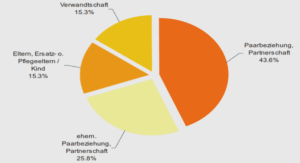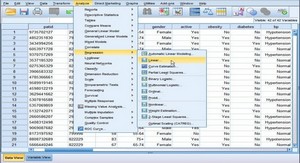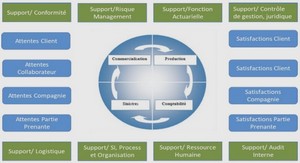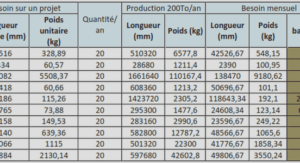OUTCOMES
In the urban plan but it is not clearly integrated in the urban form features related to parks, squares, parking, etc; dealing with flood risk. Mainly, this is actually one of the weaknesses that we found in Le Havre. Nowadays we can see as projects at catchment scale which has been adopted and implemented (Flood retarding basins) mainly in surrounding areas, and at the same time, projects at neighborhood (Waterways, dew pond, etc) and building scale (Temporary methods to protect as well as adaptation of waterproof materials at home)51 which has been adapted but are still not implemented entirely. Taking previous into consideration in a way is necessary to create links among those three scales that are related directly with flood mitigation (See figure 17)
Hypothesis
Furthermore most of the authors included in the literature review have been focusing since few decades ago on the population growth issue which takes a relevant worldwide position on the political agenda. In this context, concepts such as renewal built-up and urban regeneration appear more and more in most of the studies/analyses about the cities. Referring to that, ongoing urban processes is going to suggest radical transformations including movement of people, changing habitudes, new views about the city, etc (B. Ginot 2010). In this way our approach presents as hypothesis: if nowadays exits urban processes in terms of infrastructure of cities such as housing, buildings, runways, etc; where the aims are going to address mainly to adopt new construction material for instance. Concerns flood mitigation; it has a talent to producing considerable changes on the ongoing urban processes through the catchment, neighborhood and building scale working together on it. In this way, taking the previous argument into account, Montivilliers should be regarded as a city with a talent to produce innovative measures about regeneration of areas based on the resilience concept. This means that it can produce relevant changes in flood risk management related to the ongoing transformation of the city
APPENDIX
Index 1 Types of Flood events in Le Havre, according to the “Risque Majeur en Haute Normandie”: TYPES OF FLOOD RISK IN LE HAVRE Overflows Stream overflows can understand as minor river beds (lit mineur) and it could increase until to occupy temporarily its major river beds (lit majeur). It progress is slow, and can be anticipated several hours even several days in advance. Runoffs and mud flows Rainfall can come along with runoff in slope areas. It become more often in the mountainous regions. Due to that, the plants which are acting as natural obstacles tend to disappear. In addition, the ground is often waterproofed in deforested surfaces due to the intensive agricultural practices which produce several amount of silt without allowing the infiltration of rainwater. Therefore, runoff tends to produce mud flows. Stagnation of water The stagnation is an accumulation of water in a low point. It due to non filtration capability, as well as slow evacuation of water, in a waterway during rainfall events. High water table levels In case of long rainfall events, the saturation of grounds can produce a flood due to rising in the water table levels. These groundwaters levels are affecting directly by the rainfalls event having as consequences differences of height. This type of flood can be several months while water table becomes low.





